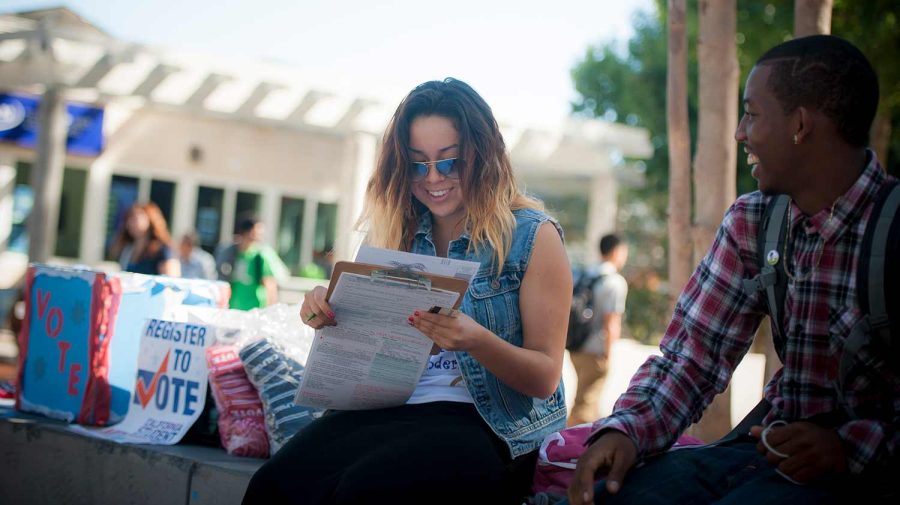There are less than 60 days until students at UC San Diego once again turn out to vote in the 2020 California Primary on Tuesday, March 3. Here is your guide to the elections on the ballot, how to register to vote, the voting process, and more.
Primary elections are the process where voters indicate their preferences for a candidate nominee, who then moves on to a general election. California has a top-two primary system, a type of election where all candidates are listed on the same ballot. The top two candidates who receive the most votes, regardless of their partisan affiliations, advance to the general election. The 2016 Senate primary notably saw two Democrats, Kamala Harris and Loretta Sanchez, move on to the general election.
This year’s primary will be held on March 3, 2020 and polls will be open from 7 a.m to 8 p.m. Local races on the ballot include open seat races for Mayor of San Diego and City Council District 1, which encompasses UC San Diego. California as a whole will have state and federal elections for all 80 State Assembly seats, 20 of the 40 State Senate seats, and all 53 United States Representatives. California Proposition 13, which addresses the School and College Facilities Bond, will be the only initiative on the ballot.
In September 2017, Governor Jerry Brown signed a bill to move up California’s primary elections in 2020 to March to increase the influence of the state in the presidential nominating process. California’s primary will be on Super Tuesday, the Tuesday when the largest number of states and territories hold a presidential primary or caucus.
Much of the attention is currently upon the Democratic Party’s presidential primaries. The latest polling averages in California indicate a continuing tight race between former Vice President Joe Biden at 22 percent, Senator Bernie Sanders at 20 percent, and Senator Elizabeth Warren at 16 percent as of Jan. 3, 2020.
The Democratic Party, the Libertarian Party, and the American Independent Party will be allowing voters who have listed their political affiliation as “no party preference” to vote in their respective presidential primaries. The Republican Party, the Peace and Freedom Party and the Green Party will require voters to be registered with their party in order to vote on one of their respective ballots.
In order to be eligible to register to vote in California, you must be a United States citizen; a resident of California, 18 years of age or older on the day of the next election; not imprisoned or on parole for a felony conviction; and not found mentally incompetent by a court. You may only be registered to vote at one home address.
You can register to vote online on the California Secretary of State’s website. You may also register through mail by the postmark deadline of Feb. 18, 2020, or you are able to conditionally register and vote at your local county elections office after the 15-day voter registration deadline. College students are allowed to register using their college address.
Registered voters may also request to vote by mail instead of going to the polls on Election Day. The vote-by-mail ballot request must arrive at the county elections office by Feb. 25, 2020 to ensure that the ballot arrives before the election.
According to the San Diego County Registrar of Voters, vote-by-mail voters will receive their ballots anywhere between 29 and 7 days before Election Day. You may return your voted ballot by mailing it to your county elections official, returning it in person to a polling place or the office of your county elections official, dropping your ballot into one of your county’s ballot drop boxes, or authorizing someone to return the ballot on your behalf.
In past elections, the Student Organized Voter Access Committee at UCSD has provided polling locations for on-campus students at each college. On-campus polling locations for the 2020 Primary are currently undecided and will be updated at a later date.
Photo courtesy of UC San Diego News Center.














